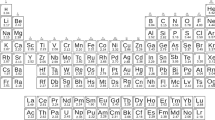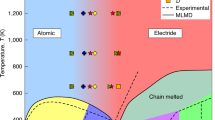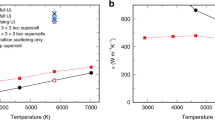Abstract
ON the hypothesis of the existence of ‘free electrons’ in metals, Drude, Lorentz, and recently Sommerfeld have explained the Wiedemann and Franz law, namely, that the ratio of the thermal and electrical conductivity is the same for all metals, and is proportional to the absolute temperature. In a paper by Mukherjee and Ray, to appear shortly, the authors, in order to explain the conductivity of metals, have pictured the ‘valency shells’ of the neighbouring atoms as touching each other, and thus forming a large equipotential surface in the metal crystal. Electrons in this surface travel freely without doing any work, and in this restricted sense they are termed ‘free’.
This is a preview of subscription content, access via your institution
Access options
Subscribe to this journal
Receive 51 print issues and online access
$199.00 per year
only $3.90 per issue
Buy this article
- Purchase on Springer Link
- Instant access to full article PDF
Prices may be subject to local taxes which are calculated during checkout
Similar content being viewed by others
Author information
Authors and Affiliations
Rights and permissions
About this article
Cite this article
RAY, B., CHAUDHURI, D. Ionisation Potentials and Conductivities of Metals. Nature 124, 512–513 (1929). https://doi.org/10.1038/124512c0
Issue Date:
DOI: https://doi.org/10.1038/124512c0
Comments
By submitting a comment you agree to abide by our Terms and Community Guidelines. If you find something abusive or that does not comply with our terms or guidelines please flag it as inappropriate.



